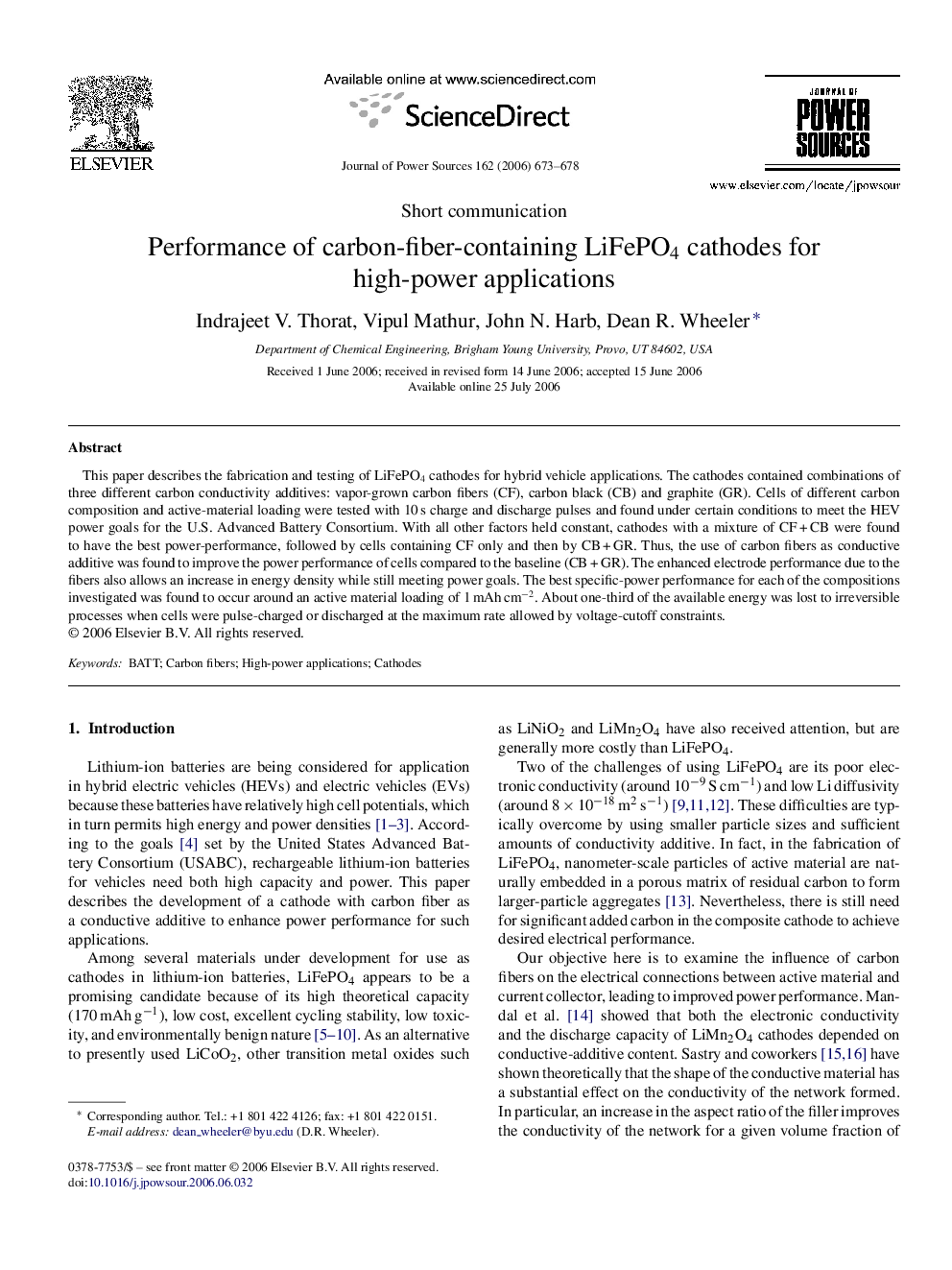| Article ID | Journal | Published Year | Pages | File Type |
|---|---|---|---|---|
| 1291895 | Journal of Power Sources | 2006 | 6 Pages |
This paper describes the fabrication and testing of LiFePO4 cathodes for hybrid vehicle applications. The cathodes contained combinations of three different carbon conductivity additives: vapor-grown carbon fibers (CF), carbon black (CB) and graphite (GR). Cells of different carbon composition and active-material loading were tested with 10 s charge and discharge pulses and found under certain conditions to meet the HEV power goals for the U.S. Advanced Battery Consortium. With all other factors held constant, cathodes with a mixture of CF + CB were found to have the best power-performance, followed by cells containing CF only and then by CB + GR. Thus, the use of carbon fibers as conductive additive was found to improve the power performance of cells compared to the baseline (CB + GR). The enhanced electrode performance due to the fibers also allows an increase in energy density while still meeting power goals. The best specific-power performance for each of the compositions investigated was found to occur around an active material loading of 1 mAh cm−2. About one-third of the available energy was lost to irreversible processes when cells were pulse-charged or discharged at the maximum rate allowed by voltage-cutoff constraints.
